How Chiefs QB Patrick Mahomes Made Football Easier—With Basketball Twists

The boy in the video is small, only 8 years old, clad in a yellow jersey and white gym shorts. He’s playing basketball, alone at this moment, beckoning a pass. The court he’s playing on is smaller than regulation size; it’s two courts that run horizontally, side by side.
This boy receives the ball, as the game’s final seconds tick away. He dribbles twice with his right hand, plants near midcourt and lets go of a one-handed shot that looks more like a downfield pass. The ball launches from his right hand toward the basket, which is maybe 30 or 40 feet away. He falls to his left, naturally, the wobble indicative of the force required for this heave. The attempt arcs, floating almost, until the ball drops toward the rim, rattles in both directions and … falls through.
Game, over. Bedlam erupts around him. Teammates rush over, surrounding him, patting his back, lifting him off the ground. Anyone watching this video now knows who the 8-year-old became. They can see the genesis, right there, the athleticism that drops jaws, the rising to meet the moment and that arm, the one that will, one day, be replicated in statue form.
Patrick Mahomes is that 8-year-old.

But what viewers—or fans of his more typical work, undertaken on Sunday afternoons—might understand less is that this video projected not just success in his chosen sport but how he would revolutionize pro football’s most important position. Mahomes dazzles. Mahomes dips and spins and darts, regardless of body position. Mahomes slings footballs from the oddest angles, throws touchdown passes with a vicious sidearm delivery or while leaping and midair, and tosses short attempts underhand, as if shoveling loaves of bread toward open teammates.
Part superstar, part novelty, part innovator, Mahomes is a football wizard. But for most of his six pro seasons—five as the Chiefs’ starter, two league MVP awards, two Super Bowl MVP honors, three appearances in the NFL’s final game and two Lombardi Trophies—his creative, how-did-he-do-that style has been largely attributed to his athletic gifts and baseball background. That sentiment is both true and woefully incomplete. Because when those who know Mahomes best watch him play quarterback unlike anyone ever has, they see his short-lived high school basketball career as a pivotal influence, perhaps, even, the primary driver.
“You know, just the arm angles he uses to sling that thing,” says Ryan Tomlin, Mahomes’s basketball coach at Whitehouse High School for three seasons. “I mean, Pat was a great, great, great distributor of the basketball.”
Maybe Tomlin’s take is obvious. That a quarterback who will turn 28 on Sept. 17—and could already make the Hall of Fame if he never played another down—can, well, pass something with great skill. But it’s rarely relayed that way, with hooping as central to Mahomes’s stylistic leanings on the football field.
Basketball, in fact, intertwines with Mahomes’s story in myriad ways. The most compelling is the athlete-to-athlete comparison he most favors. Mahomes loves when anyone says he reminds them of Steph Curry, the Warriors shape-shifting, sharp-shooting, championship-collecting guard. The similarities seem obvious—and apt. What made Curry distinct also made him divisive, at least in how teams evaluated him. Same with Mahomes. Neither would rank among the best in their profession at any specific athletic attribute, whether speed, agility, strength or quickness. And yet … both play different sports with the same verve, same vibe. Because their styles differ drastically from their peers, opponents must spend extra time accounting for the variance. But since both are creative, not to mention adaptable, and because both are said to possess brains that are more like computers—able to input and apply data from games in real time—they simply pivot into another way to win.
“With Curry, you can’t give him a window of space,” says Tomlin, over the phone from Texas, where he now works at another school. “If you do, he’s gonna make you pay. Pat, he does the exact same thing.”
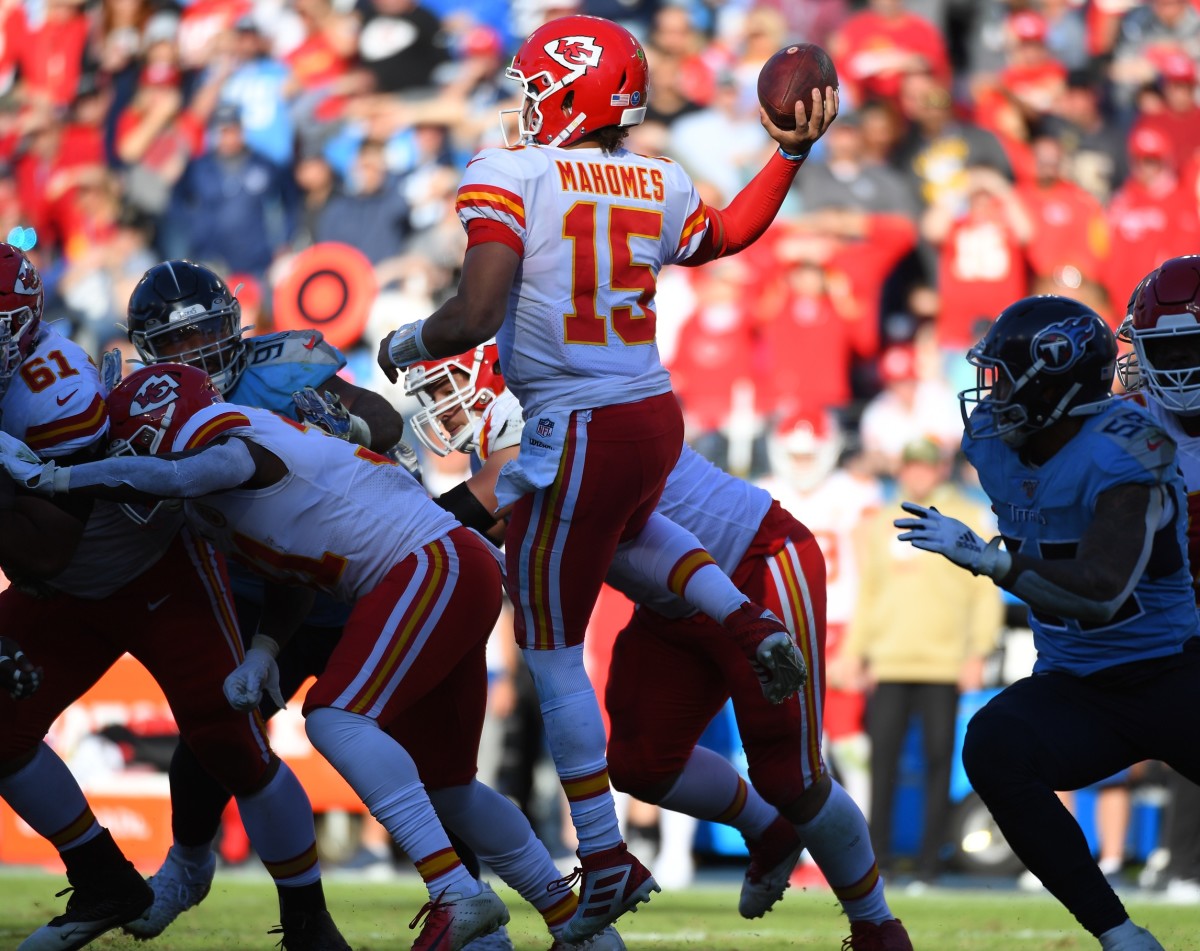
Mahomes grew up in football country, not far from Dallas. But while his gridiron glory might seem like a birthright, he was always more athlete than quarterback. All three of his high school coaches that Sports Illustrated spoke with recently relayed the same anecdote, unprompted. They never saw him going anywhere without a ball in hand. When football season wasn’t over but another basketball campaign had started, Tomlin would offer Mahomes a break from Saturday scrimmages, allowing for rest and focus. Mahomes always showed up anyway, regardless of how many hours he slept or how many bruises dotted his arms.
In the eighth and ninth grades, basketball called to Mahomes’s soul more than other sports. He played baseball, of course, in part because his father, Patrick Mahomes Sr., was amid an 11-season MLB career. Football, too. But Tomlin saw hoops as the younger Patrick’s most fervent dream. “We discussed that,” Tomlin says. “Baseball was his adopted deal. But I always thought: There’s something about basketball with him, man. He just loved it.”
For all the obvious “passing” comparisons between sports, Mahomes wasn’t a full-time point guard throughout high school. He grew to 6'2" or 6'3", depending on the estimate, and while either height would make him “small” for an NBA guard, for a high school player, he all but towered. Tomlin deployed him all over the court in various ways: point guard, shooting guard, combo guard, swingman and even, often, at power forward. His range made Mahomes impossible to defend. And such versatility imprinted early lessons: Matchups mattered, and game plans required tweaks.
His handle was still elite, though. Mahomes dribbled like a whirling dervish, winding basketballs through his legs or behind his back, throwing in jab steps and crossovers. He idolized Michael Jordan, and he’d often ask his parents, Pat Sr. and Randi, for Bulls jerseys or gym shorts as gifts for any holiday upcoming.
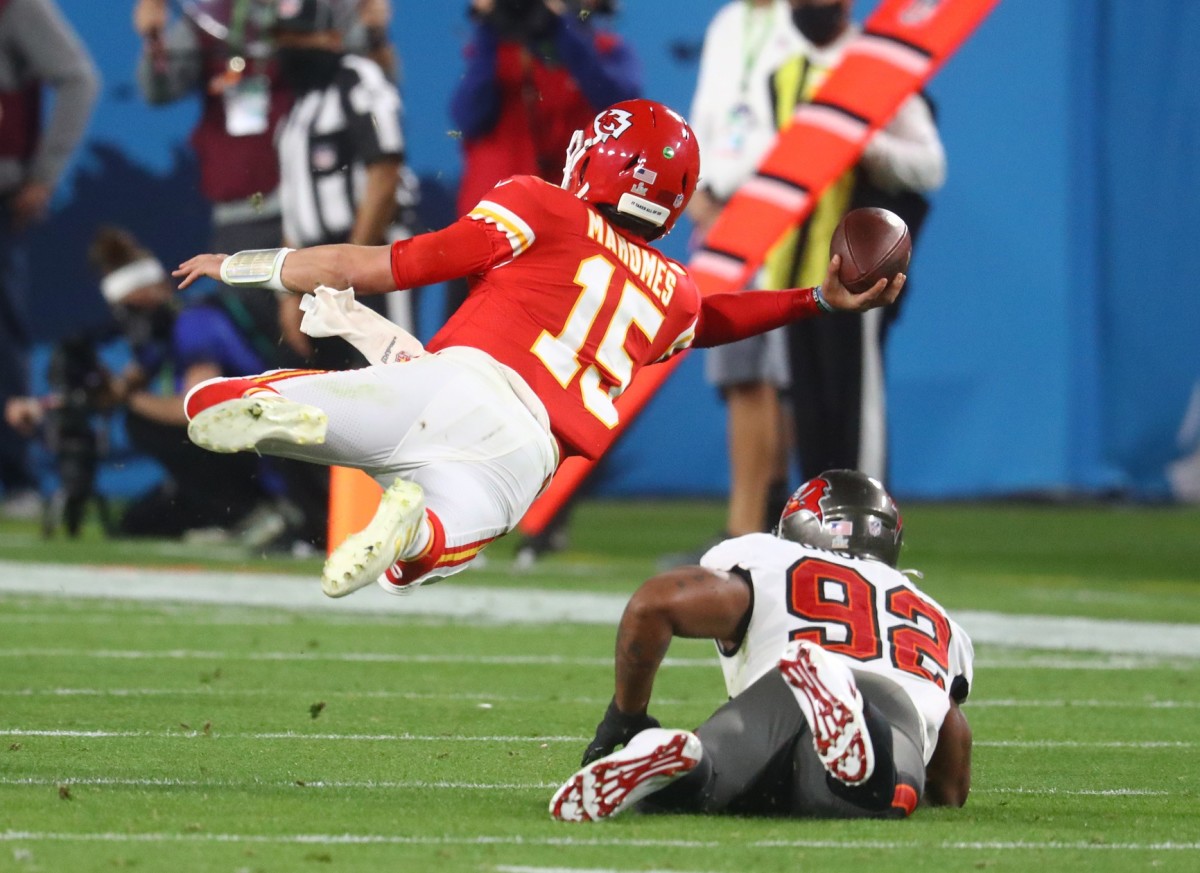
High school highlights—various iterations have been widely distributed on YouTube—point viewers toward how, one day, he would enhance football skills with basketball-specific ones. There’s Mahomes, barreling over a defender for a dunk, imprinting his athleticism. There he is, finding open space, either for teammates or himself, everyone connected but with Mahomes steering all into slivers of space.
Him, spinning in the lane and tossing in an off-balance bank shot, finding a way, in real time, with no obvious solution. Him, slinging passes the full length of the court, hitting sprinting teammates in stride. Him, shooting bounce passes through defenders’ legs. Him, passing and passing, all while jumping, falling, stumbling; with one hand, two hands, or half a hand; delivery angles ranging from sidearm to underhand to overhead; body positioned sideways, more horizontal, falling backward. You know, exactly how he plays quarterback.
Tomlin recalls one of dozens of examples. He cannot recall the exact game, only that Mahomes was dribbling up the floor, late. He pushed the ball into a trap, doing exactly what Tomlin had taught him not to do, and in the worst possible place, before half court, near the sideline corner. Tomlin prepared to leap from his seat and remind Mahomes what he already knew or should have known. But before Tomlin could lift his own body, it was Mahomes who leaped, into the air, above the defenders who surrounded him. He then launched an overhead pass … nearly the full length of the court … while off his feet and off-balance … with one hand … to a streaking teammate … who was open, caught the pass and scored. Touchdown, more or less.
“I don’t even know what to say about that,” Tomlin told an assistant on the bench.
“I baited that trap,” Mahomes soon told him.
Told that he must be one of few humans alive who coached basketball but impacted NFL history, in a roundabout way, Tomlin laughs. “That,” he adds, “is pretty crazy.”
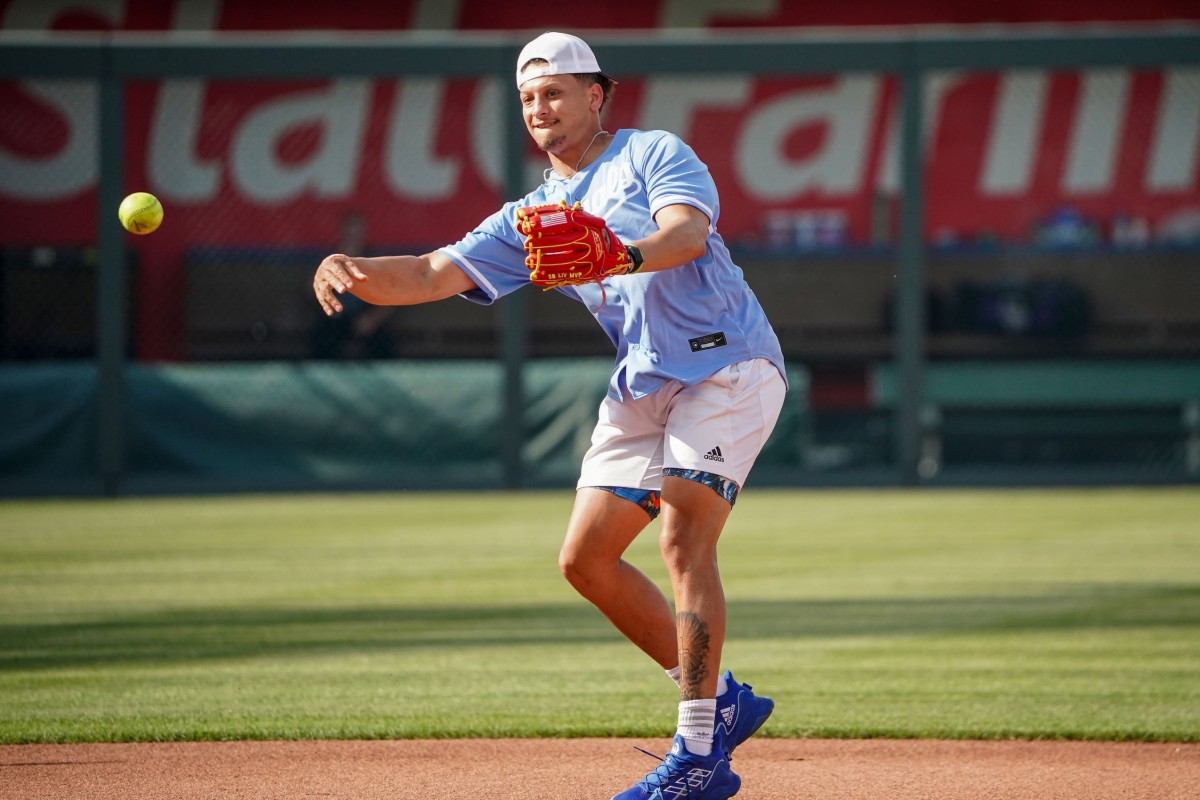
Mahomes’s style, the sandlot soul, owes to more than just basketball. His coaches describe him as a walking, endorsing, cementing example of the benefits culled from a multiple-sport approach to childhood.
At Whitehouse, he starred in all three. In football, he threw for more than 5,000 yards and tossed 65 touchdown passes. In baseball, the arm that’s now described in mythological terms, could hit mid-90s on radar guns. Mahomes projected as an MLB prospect—the Tigers, even knowing his football preference, took him in Round 37 in the 2014 draft—after he once completed a no-hitter with 16 strikeouts. He played football and baseball at Texas Tech, before making quarterback his full-time aim starting his junior season.
Each sport made him better at the others, more athletic, more balanced and, ultimately, more creative. The flurry of practices, meetings and games prepped him for life as a professional athlete while deepening his bonds with both parents, whether the father he identified with and the advice Pat Sr. gave him, or the mother who sacrificed, endlessly, for Patrick and his two younger siblings. “Whatever I did, I could be the best at it,” he told me in 2021, 10 days before Super Bowl LV. “That belief was instilled in me at a very young age.”
He laughed over the phone that day. But the chortle unspooled more like an acknowledgment. “I can’t believe … all those car rides …”
In other places, other coaches might have pushed Mahomes to specialize. His football mentor at Whitehouse, Adam Cook, did not, on purpose. Cook encouraged his players to engage in multiple sports and even more activities all year long. He believed that well-rounded humans made for better versions of themselves. Cook is no longer coaching, but for as long as he did, he cited Mahomes whenever he made that speech to another, younger athlete.
Basketball, the football coach says, made Mahomes a better leader, widening his impact. It helped Mahomes manage his time, which is now increasingly limited. It provided an outlet for his famous competitive itch.
Sure, danger loomed, in the form of too much everything. Mahomes would shake off modest injuries for hoops practices. But whenever totality threatened to overwhelm, Cook said something like, “You gotta slow down sometime.” He trusted Mahomes to find the right internal calibration. He always did.
At various points in high school, Mahomes told Cook, “I think I might try to play basketball. I love basketball.”
Instead, he kept, shaped and cultivated his hoops soul, then adapted what he could to the sport he picked, the sport that now defines him. This was obvious even before he graduated. Tomlin left Whitehouse before Mahomes’s senior season, and the school hired Brent Kelley to replace him. Kelley mostly slotted Mahomes at the four, but not exclusively in the post, where he scored at will due to elite body positioning. Late in games, Kelley shifted him to point guard.
That season, Kelley emphasized an odd concept related to Mahomes specifically. It’s only odd in relation to his offensive output, because Kelley wanted higher effort and more emphasis from Mahomes on defense, which Mahomes immediately provided. “He was an easy fit, in every way,” Kelley says. “So smart. Never in foul trouble. Played 32 minutes a game, at both ends.”
That year, Whitehouse went 27–6, good for the school’s best season in years. The Wildcats advanced to the third round of the state playoffs before losing to the No. 1 seed. Of the losses that season, only one came with Mahomes available and in the lineup. The last one.
Cook watches his protégé now and marvels—the eyes, always pointed down the field, just like they used to point downcourt, the scanning for openings no one else sees, the subtle movements that shift him into perfect positions. “I do believe basketball helped him for those quick transitions, the different throws and seeing the field,” Cook says. “I definitely believe that basketball played a role in his development.”
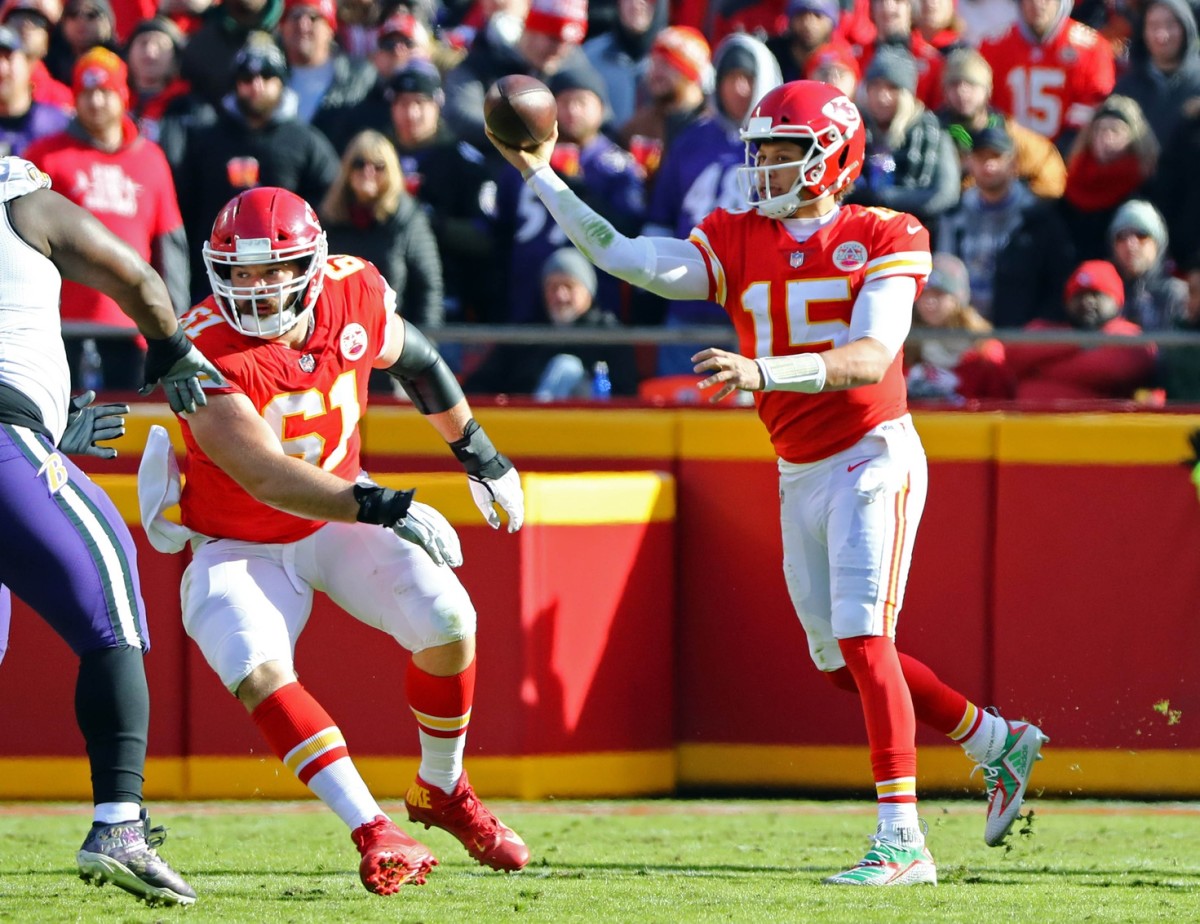
The coaches all point to the same moment that made such notions abundantly clear. It happened in 2018, in a December game against the Ravens. Mahomes took the snap in the shotgun, shifted left to avoid pressure headed up the middle, snuck right, looked right and threw to the left, across his body, to a streaking wideout. Mahomes never looked in that direction. He had thrown the first of dozens of examples of the same thing: a no-look pass in football. “Oh, my gosh, did he really just do that?” thought Kelley, who was watching that game live. “It’s a freaking NFL game, you know.”
Kelley sees his former forward/late-game point guard in the famous quarterback every time he watches. All the off-balance throws and variance in arm angles owe to his baseball background. But that vision, the way Mahomes sees the field to manipulate the other 21 players, that’s the distributor in him. The perfect blend, Kelley says.
Even Clark Hunt, the franchise’s chairman and CEO, received reports of similar events in 2017 practices, while Mahomes backed up Alex Smith as a rookie. “They’d say ‘no look,’ but I had never heard of a no-look pass, except in basketball,” Hunt told me before Super Bowl LIV. “If you watched the videos closely enough, you’d see it, him looking one way and throwing the other. I didn’t know that was possible.”
Basketball has intersected with Mahomes’s football career—and often in tangential or unexpected ways. He shoots baskets on the hoop inside the Chiefs’ locker room, a tradition that dates back to his rookie season, where the quarterbacks played games of Knockout.
He found out that Smith had been traded to Washington, oddly enough, while watching his younger brother, Jackson, play basketball for Whitehouse.
In football, “He put up basketball numbers,” Dolphins cornerback Xavien Howard, who played against Mahomes in college and the NFL, told me before Super Bowl LIV.
In warmups, Mahomes continued a ritual from his Texas Tech days, lobbing spirals toward the goalposts from ever-deeper distances, as if playing H-O-R-S-E on turf. One of his Red Raider backups, Nic Shimonek, remembers Mahomes needing to loft one throw 70 yards in the air, high enough to arc downfield and land in just the right spot. Bang! Dead center. “He just holds up his finger, points to the sky and takes off running,” Shimonek told me in 2020. “Ran straight into the locker room.”
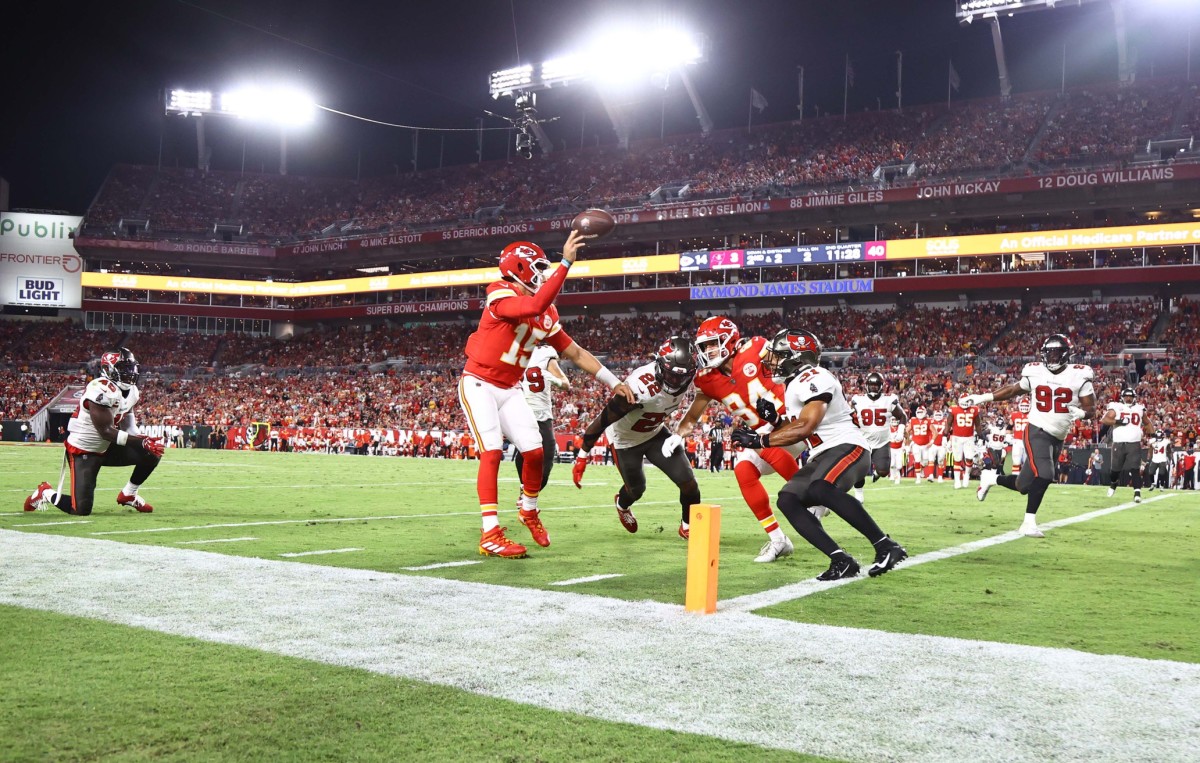
In games, such as last October against the Buccaneers, he celebrated a particularly ridiculous touchdown pass—a quick flip over a wall of defenders to a streaking target—by “shooting” a teardrop jumper through a teammate’s arms, which were shaped like a “basket.”
Another video went viral in 2019, though, shifting his basketball-football calculus once more. Again, it features Mahomes; again, on a court, doing Mahomes things. He’s dribbling right, crossing over, driving left. He splits two defenders with a series of dribbles. He spins back, body rotating to the left, then transitions his momentum for a layup he scoops in with his right hand.
Chiefs executives responded immediately. General manager Brett Veach told Sports Radio 810 WHB that he had called Mahomes’s representatives and re-emphasized a necessary aversion to “dangerous” or “harmful” nonfootball activities. Playing basketball was one of them. After all, he had just captured his first MVP award after throwing for 5,097 yards and 50 touchdowns.
Ultimately, one competitive aim superseded the other, easily, by the widest of margins. Mahomes simply took up golf—and was annoyingly good, annoyingly early, at that, too. He also shifted his basketball skills to the family living room, where he told me last January, “I’m always following Sterling [his daughter] around like I’m playing man-to-man defense in basketball.”
When Mahomes signed his massive contract extension after winning Super Bowl LIV, the basketball language was more explicit, expressly forbidden. Even then, two unrelated athletic endeavors continue to intersect in the same place, for the same QB. In the NCAA tournament, Kansas State coach Jerome Tang, inspired by the Chiefs’ numerous bubble screens, drew up a play that doubled as an homage to them. Mahomes, he called it, for obvious reasons, as the Wildcats advanced to the Sweet 16 in Tang’s first season.
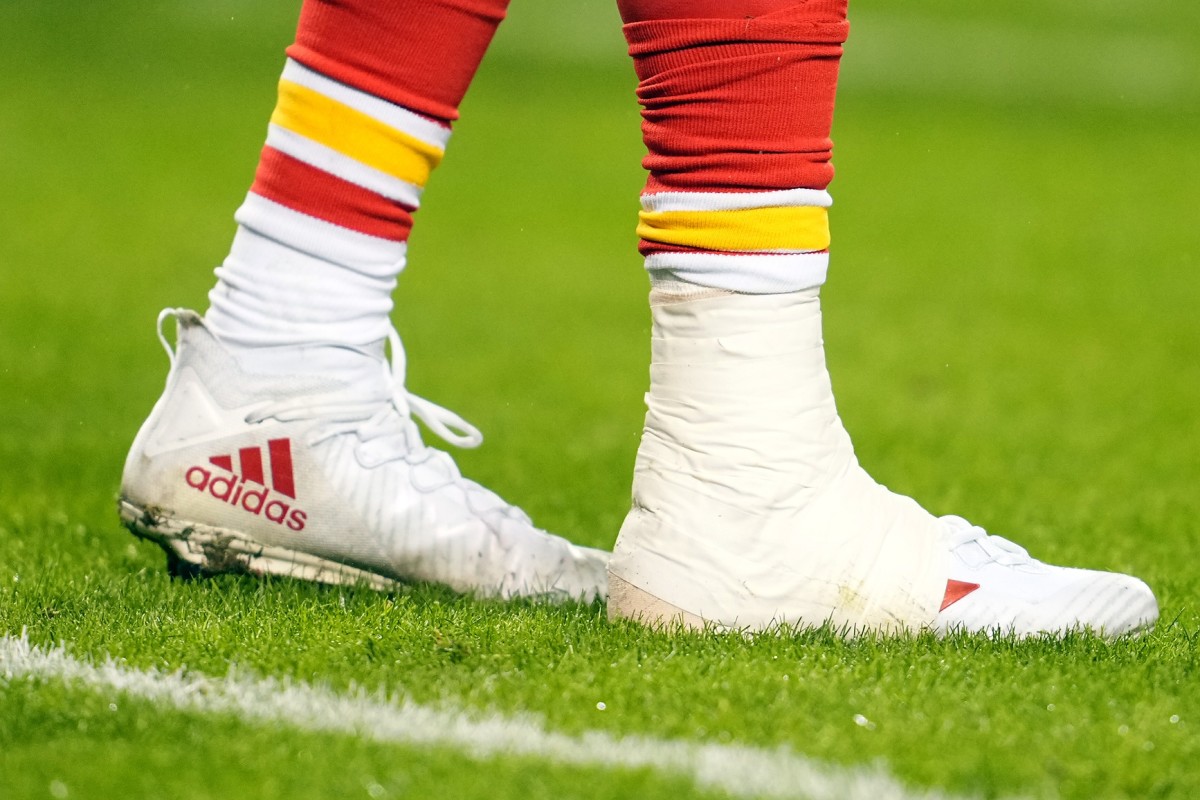
The high school coaches laugh at one particular scene from the recent and Mahomes-heavy Netflix series, Quarterback. In the series’ most memorable scene, cameras captured Mahomes after suffering a severe high-ankle sprain against Jacksonville in the playoffs last January. The coaches laugh because, in the episode, Mahomes is as they remember him, yelling at Andy Reid that he won’t come out of the game, his facial expressions, body language and demeanor all suggesting he wouldn’t consider it. All remember life on the receiving end of that. Tomlin says sometimes Mahomes would sit next to the coaches, offering feedback on what he saw at first but searching for a different kind of opening all the while. Eventually, he’d ask, “When am I going back in?”
That’s the thing. As everything else changes, Mahomes does not. When he can no longer play basketball, he still finds ways to incorporate those lessons, that soul, into Steph Curry quarterback play. He sits courtside at NBA games whenever possible. He has spoken consistently about helping bring the NBA back to Kansas City. And, when the Raptors were considering other, U.S.-based cities to play “home” games in during the global pandemic, Mahomes floated K.C. as a potential home.
As for whether he could play in the NBA, his coaches all point to one limiting factor—his height. All also add a disclaimer: They wouldn’t bet against him.
Mahomes gave them even less reason this August. While competing in the American Century Championship in Lake Tahoe, Calif., Mahomes noticed a hoop stationed beyond a golf green. He called for a ball, shifted his body to the right for a touch of momentum and threw up another one-handed shot, just like in the video of him as an 8-year-old. Swish. Nothing but net.
In his group that day, a world champion boxer stood nearby. Canelo Álvarez watched Mahomes with the same reaction Chiefs Kingdom falls into every Sunday. “Unbelievable,” Álvarez told me, as part of a larger interview for a different story. “He can do everything unlike any other athlete. It’s just amazing.”
No, Mahomes won’t go full Jordan and switch sports mid-career. Instead, he did Jordan one better. He took the other sport and incorporated it into the one that matters, making football easier, with some basketball twists.
